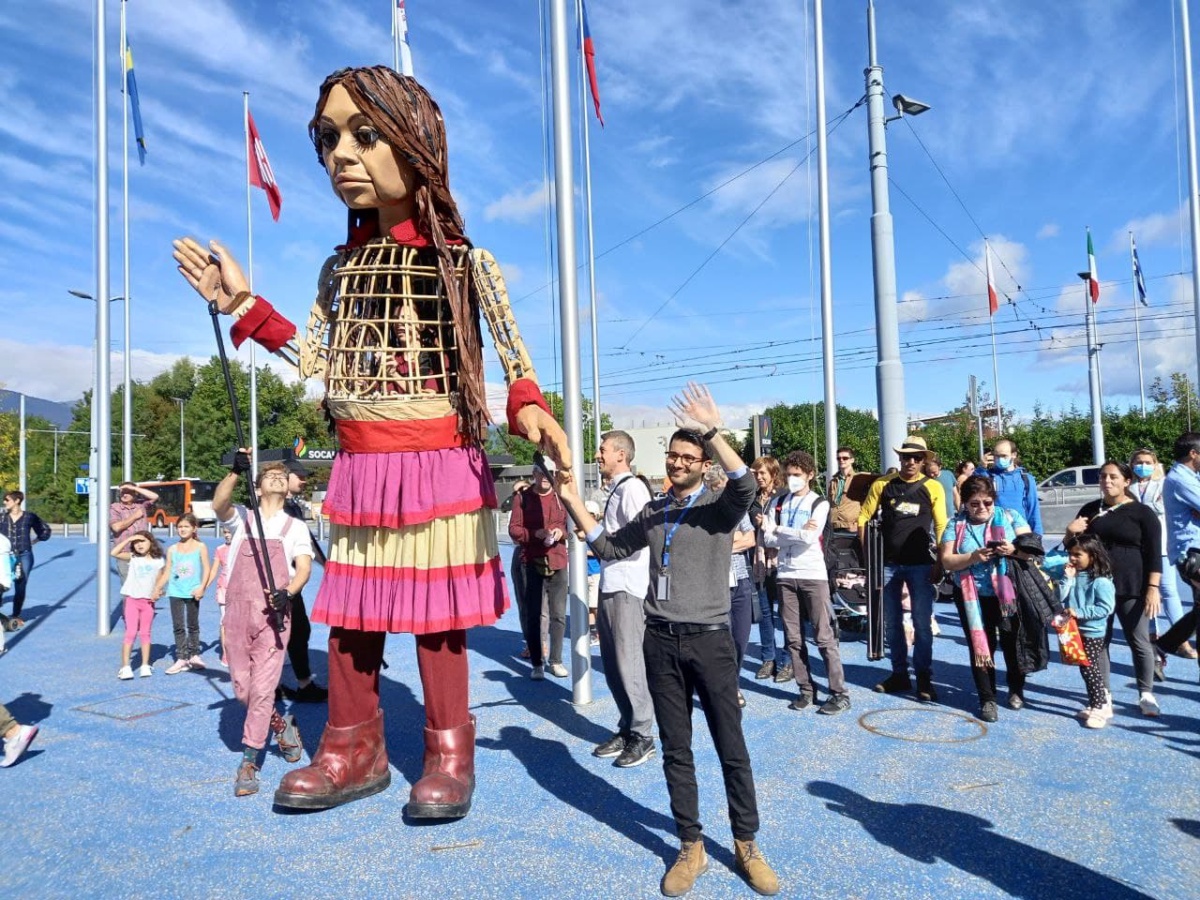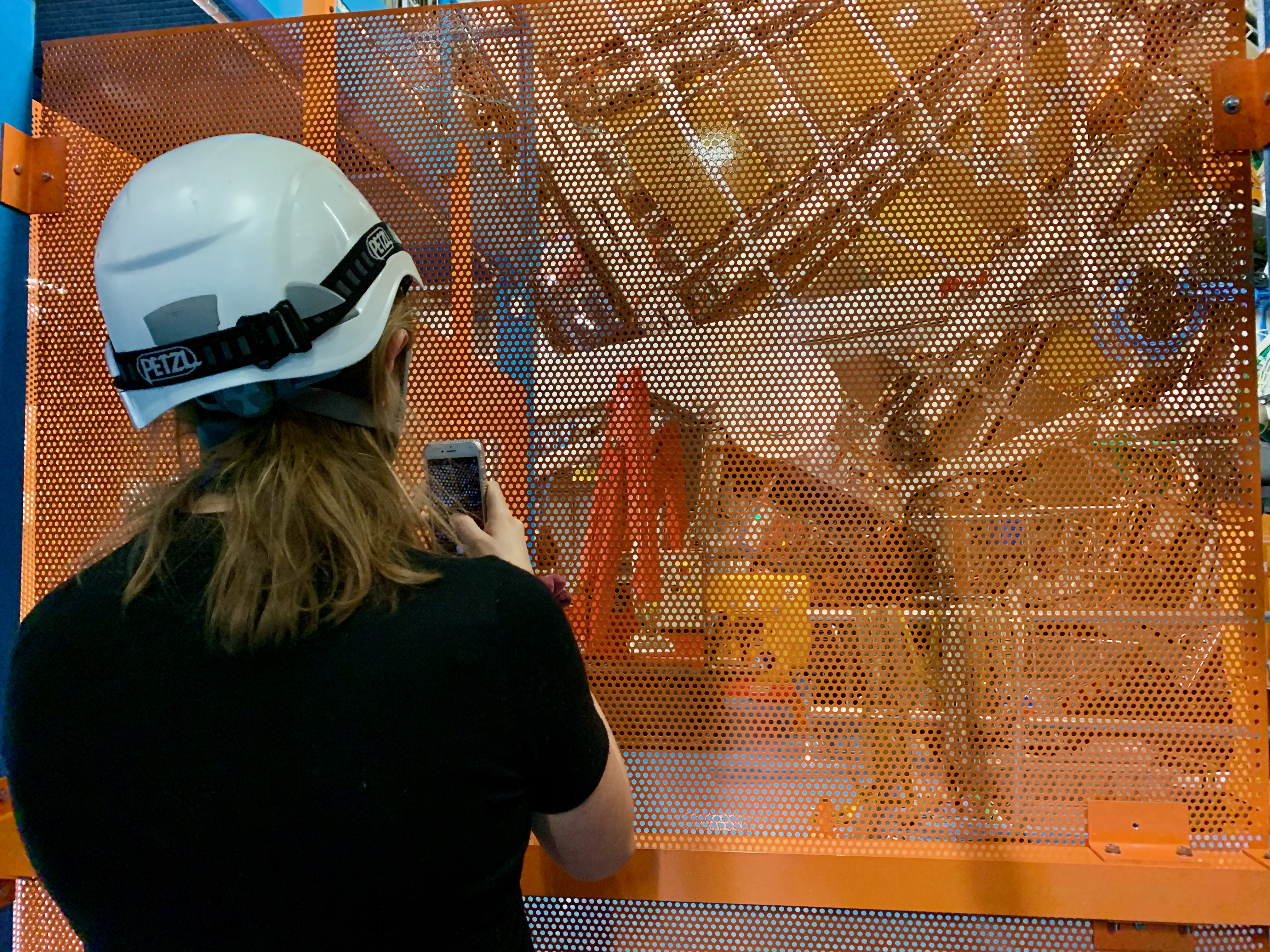German Chancellor Merkel visits ATLAS
1 May 2008 | By

German Federal Chancellor Angela Merkel made a historic visit to CERN at the end of last month. During her brief 1.5 hours on site, she was taken on a whistle-stop tour of the ATLAS control room and cavern, and given the chance to look down on the largest particle physics experiment in the world from a dizzying height of 100 metres through the access shaft which links the massive underground cavern to the surface.
As well as being introduced to the Director General and Members of CERN’s top management, and taken on a tour of the cavern by ATLAS spokesperson Peter Jenni, Merkel spent time with a group of 13 young German scientists currently working at CERN. ATLAS’ Sandra Horvat, a postdoc from the Max-Planck-Institut für Physik in Munich, was one of the lucky 13, and spoke with the Chancellor about the visible shell of the detector – the muon spectrometer – and the search for the elusive Higgs boson.

The Higgs boson is an elementary particle predicted to exist by the Standard Model of physics, but which has yet to be seen experimentally. The theory says that it is this particle which is responsible for giving all the others the property of “mass”. The ATLAS detector – in its mission to reveal the secrets of our Universe – will search for the Higgs, as well as investigating other, contradictory, theories.
Herself a former physicist, Merkel quickly grasped the principle behind the Monitored Drift Tubes which are part of the muon spectrometer – they monitor exactly where each part of the detector is in space, meaning that the paths of particles passing through the detector can be tracked with precision and confidence.
Merkel asked all the right questions, according to Sandra: “She was very interested to find out what the Higgs particle actually is, and why it is so important to find it,” she recalls. “After hearing that it is the only particle predicted by the Standard Model which hasn't been found yet, she questioned what would happen if we don’t find it.”
ATLAS Physics Coordinator Karl Jakobs promptly stepped up, giving her a concise explanation of the other theories and physics goals beyond the Standard Model, including supersymmetry and extra dimensions.
“Merkel appeared to find the detector construction effort hugely impressive, and all the proposed research topics very intriguing, even asking questions about heavy ions and string theory,” remembers Sandra. “But I think the most powerful impression she took with her, after speaking with the young scientists, was of their great enthusiasm for their research, their willingness to work out of hours, and the eager anticipation here of the first LHC collisions.”



